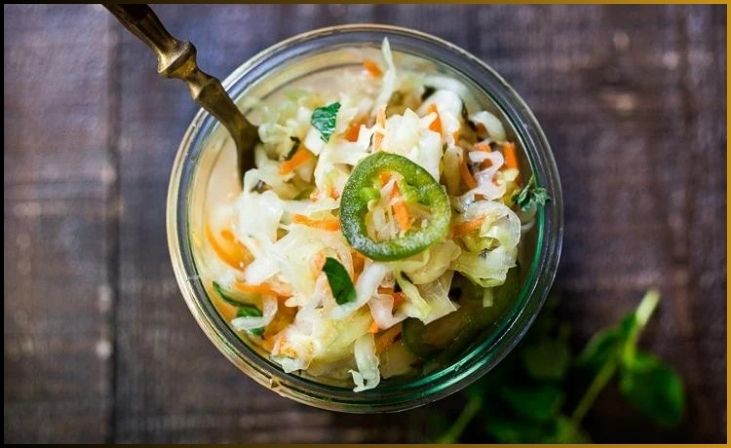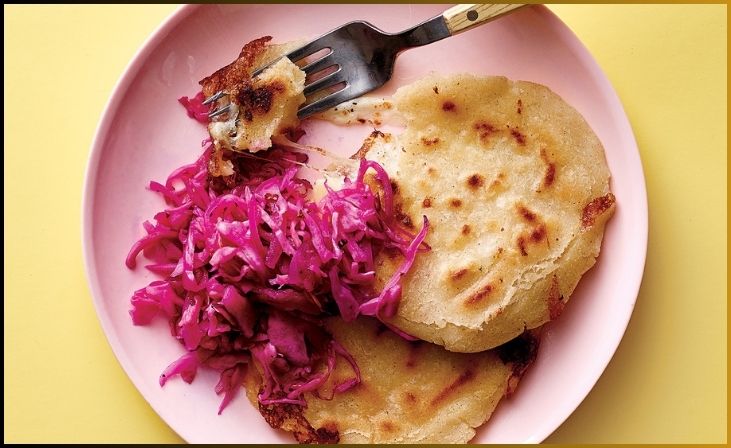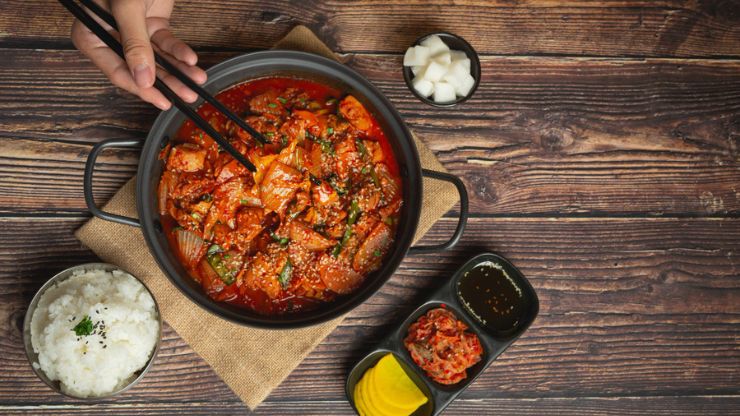Embark on a culinary journey to explore the intriguing world of Curtido, the beloved “Kimchi of Central America.” While many have savored the vibrant flavors of kimchi, fewer are acquainted with its Central American cousin, Curtido. In this culinary adventure, we will unravel the delicious secrets of this zesty condiment, tracing its roots back to indigenous traditions and its evolution into a beloved accompaniment across Central American countries like El Salvador, Guatemala, Honduras, and Nicaragua.
Curtido isn’t just a side dish; it’s a cultural symbol that speaks volumes about the resilience and resourcefulness of Central American culinary heritage. With its simple yet flavorful ingredients, Curtido has the power to elevate the taste of diverse dishes, making it a versatile addition to your culinary repertoire. So, join us as we dive into the world of Curtido, celebrating its unique flavors and cultural significance in Central American cuisine.
Table of Contents
ToggleExploring the Origins
Curtido has deep roots in Central American countries, particularly in El Salvador, Guatemala, Honduras, and Nicaragua. It’s a versatile dish that can be found in various forms across the region. Each country adds its own twist to the basic recipe, resulting in a delicious array of flavors.
The history of Curtido dates back to pre-Columbian times when indigenous populations, such as the Mayans, practiced fermentation to preserve and enhance the flavors of their foods. The arrival of the Spanish introduced new ingredients, such as cabbage and vinegar, which became central to the modern Curtido we know today.
Also Read- 5 Surprising Health Benefits of Kimchi
The Key Ingredients
At its core, Curtido consists of just a few simple ingredients, making it an accessible dish for home cooks. The primary components include:
- Cabbage: Much like kimchi’s napa cabbage, Curtido uses white or green cabbage as its base. The cabbage is shredded and serves as the main canvas for the flavors to unfold.
- Carrots: Carrots add color and a slightly sweet and earthy note to Curtido. They are typically grated or julienned to evenly distribute their flavor throughout the dish.
- Onions: Red or white onions bring a pungent, aromatic quality to Curtido. Thinly sliced, they blend seamlessly with the other ingredients.
- Oregano: Dried oregano is a key spice that gives Curtido its distinct flavor. It infuses the dish with earthy, slightly minty notes.
- Vinegar: The use of vinegar, often apple cider vinegar, is a departure from kimchi’s more traditional fermentation methods. Vinegar lends a tangy kick to the Curtido and also serves as a natural preservative.
- Chili Peppers: To add heat and spice, hot chili peppers, like jalapeños or habaneros, are incorporated. These peppers can be as mild or as fiery as your palate desires.
Making Curtido

Preparing Curtido is a straightforward process, making it a great introduction to Central American cuisine. Here’s a basic Curtido recipe to get you started:
Ingredients:
- 1 small head of cabbage, shredded
- 2 carrots, grated
- 1 onion, thinly sliced
- 2-3 hot chili peppers (adjust to your spice preference), thinly sliced
- 1 tablespoon dried oregano
- 1/2 cup apple cider vinegar
- Salt to taste
Instructions:
Don't just scroll, subscribe!
BuzzTrail's unique web-stories are the cure for boredom you've been waiting for.
- Combine Vegetables: In a large bowl, mix the shredded cabbage, grated carrots, sliced onion, and chili peppers.
- Season: Sprinkle the dried oregano over the vegetables and add salt to taste.
- Add Vinegar: Pour the apple cider vinegar over the mixture and toss everything together until well combined.
- Marinate: Cover the bowl and let the Curtido marinate in the refrigerator for at least a few hours, or ideally overnight. This allows the flavors to meld and develop.
- Serve: Curtido can be served as a side dish, topping, or condiment alongside various Central American dishes like pupusas, tamales, or grilled meats.
Cultural Significance
Curtido is more than just a tasty accompaniment; it holds cultural significance in Central American cuisine and traditions. You’ll find it gracing the tables of homes and restaurants throughout the region, where it enhances the flavors of various dishes.
One of the most famous pairings with Curtido is the Salvadoran pupusa. These stuffed corn masa cakes, typically filled with cheese, beans, or meat, are complemented by the tangy and crunchy Curtido. This combination is not only a palate-pleaser but also an integral part of Salvadoran identity and culture.
Curtido is also a testament to the resourcefulness of Central American cuisine. Its use of simple, readily available ingredients highlights the practice of preserving and elevating food through fermentation and traditional culinary techniques.
Kimchi vs. Curtido

Comparing Kimchi and Curtido reveals some interesting differences and similarities. Both are fermented cabbage dishes, and they share the overarching goal of preserving and enhancing the flavors of their ingredients. However, they diverge in a few key aspects:
- Fermentation Method: Kimchi relies on natural fermentation through lactic acid bacteria, which gives it its unique sour and umami notes. Curtido, on the other hand, uses vinegar for its tangy flavor, resulting in a different taste profile.
- Spice Level: While both dishes can be spicy, kimchi’s spice often comes from Korean red pepper flakes, whereas Curtido’s heat is derived from chili peppers, such as jalapeños or habaneros.
- Ingredients: Kimchi can include a variety of ingredients like garlic, ginger, and fish sauce, depending on the regional and personal variations. Curtido tends to stick to its essential components of cabbage, carrots, onions, vinegar, and chili peppers.
- Cultural Roots: Kimchi is deeply rooted in Korean culture and is considered a national dish. Curtido, while significant in Central American cuisine, doesn’t hold the same status.
Curtido Beyond Pupusas
While Curtido’s most famous pairing is with pupusas, its versatility allows it to shine in various culinary roles. Here are a few creative ways to enjoy Curtido:
- Taco Topping: Elevate your tacos with a scoop of Curtido. Its tangy crunch and heat provide a delightful contrast to the fillings.
- Burger Enhancement: Give your burgers a Central American twist by adding Curtido as a topping. The combination of flavors and textures is sure to impress.
- Sandwich Filling: Use Curtido as a zesty and refreshing filling for sandwiches. It pairs well with grilled meats, poultry, or vegetarian options.
- Salad Component: Incorporate Curtido into salads to infuse them with vibrant flavors and a satisfying crunch.
- Grilled Meat Marinade: Consider using Curtido as a marinade for grilled meats, adding a burst of flavor and acidity to your dishes.
- Serving with Seafood: Curtido’s acidity makes it an excellent companion for seafood, offering a balance to the richness of dishes like ceviche.
For More- Make Delicious Homemade Kimchi
Conclusion
Curtido, often hailed as the “Kimchi of Central America,” is a testament to the diversity and richness of global culinary traditions. This zesty condiment, with its vibrant flavors and cultural significance, adds a unique dimension to Central American cuisine. While Curtido shares some common ground with its Korean counterpart, Kimchi, it stands on its own, boasting its own blend of ingredients and the tangy influence of vinegar.
Whether enjoyed with pupusas, tacos, or as a zesty burger topping, Curtido’s versatility knows no bounds. Its simplicity in preparation and accessibility of ingredients make it a valuable addition to the repertoire of home cooks and food enthusiasts alike.
FAQs
What’s the origin of Curtido?
What’s the origin of Curtido?
Curtido has deep roots in Central American countries, particularly El Salvador, Guatemala, Honduras, and Nicaragua. It has evolved from indigenous fermentation practices and the influence of Spanish ingredients.
How is Curtido different from Kimchi?
How is Curtido different from Kimchi?
While both are fermented cabbage dishes, Curtido uses vinegar for its tangy flavor, in contrast to Kimchi’s natural fermentation. Curtido typically includes carrots, onions, and chili peppers, resulting in a different taste profile.
What is Curtido’s cultural significance?
What is Curtido’s cultural significance?
Curtido holds cultural significance in Central American cuisine, often paired with pupusas and other regional dishes. It’s an integral part of the culinary identity of the region.
Can I adjust the spiciness of Curtido to my liking?
Can I adjust the spiciness of Curtido to my liking?
Yes, you can control the spiciness of Curtido by choosing milder or hotter chili peppers, or by adjusting the quantity of chili peppers you use.

